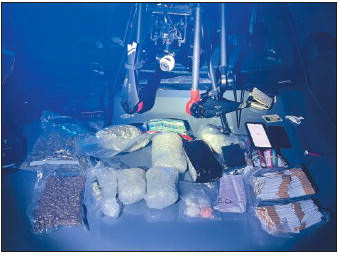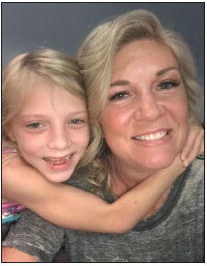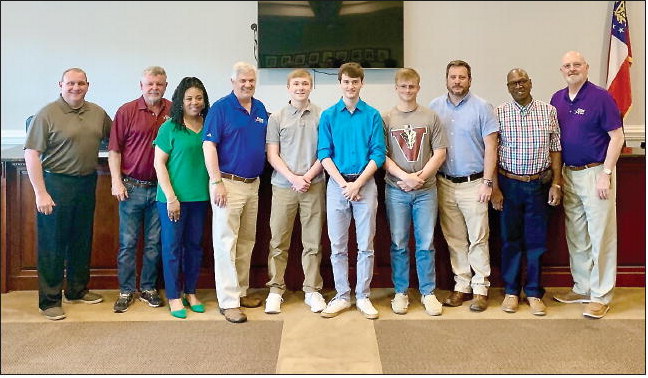editorials


A Dangerous Environment
Writing can be a therapeutic endeavor, and sometimes I write to unburden myself of a painful memory or secret I’ve been carrying around for a while. Over a decade ago, I worked in a factory that recycled rubber from old tires into decorative floor mats. It’s a fairly easy-to-understand process. A truck delivered the rubber to the plant in the form of crumbs. We mixed the rubber crumbs with “glue” and dark pigment, spread the mixture uniformly onto a slick conveyor belt, positioned the mixture underneath very hot aluminum plates where they were pressed and molded into sheets of floor mats. The conveyor belt moved the pressed sheets down a cooling rack to a table at the end where workers equipped with razor sharp circular saws (we called them knives), cut, separated, and trimmed the mats. Picture this in your head. The operators held the mats with their left hands and cut the edges off with their right hands, rotating the mat at each corner.
Because it was a production environment, speed was of the essence. The more mats produced per hour, the more money the company made.
Like the other engineers, I walked the plant floor a lot, stopping at each step of the manufacturing process to observe and propose improvements and solutions to problems. I often watched the guys at the end of the press lines frantically trying to keep up as the floor mats moved from the press to the cutting station. Two men could usually keep up, but if one of them had to step away (a bathroom break or perhaps to get his knife repaired), the other had to pick up the pace or face the supervisor’s wrath.
I knew this arrangement was dangerous. When people get in a hurry, they are more prone to make mistakes. Plus, the safety guards had been removed from the outer edge of the tools. I talked to the supervisors and the plant’s safety guy about my concerns and made several recommendations, but nothing ever changed.
One afternoon, I witnessed one of the operators, Roberto (I’ve changed the guy’s name), slice off almost an inch of his left index finger. He grabbed the bleeding finger with his other hand and ran to the men’s restroom. I ran behind him and used my radio to call for help.
“It’s no big deal,” one of the maintenance guys told me a few minutes later. “We usually lose a fingertip or two each month — especially on night shift when the new guys are working.”
The worker emerged with a bloodsoaked paper towel wrapped around his finger, and then everyone just walked away like it wasn’t a big deal.
Two weeks later, as I stood at the end of another press line, I witnessed Frederico (again, not his real name), a young twentysomething, cut off an even longer section of his digit. Freddie howled and hollered and bent over gripping his bloody hand. An older worker took off his tee shirt, wrapped it around the young man’s hand, and slowly led him to the supervisor’s office.
I looked at the table’s blood-stained surface and saw his finger resting in the black, rubber crumb and trim pieces.
“Get his finger!” I yelled, but not one of the other operators moved to help me.
I reached across the table and grabbed the finger. It looked much like a miniature sausage used to make a holiday appetizer, but there was a dirty fingernail attached to the end. I rinsed it off with water, grabbed a cup out of the trashcan, filled it with ice from the break room, and buried Freddie’s finger among the ice cubes. I got out to the parking lot just in time and handed the cup to the driver.
“Take this with you. Maybe they can reattach it.”
The following day, I learned that the doctor could not save Freddie’s finger. I also learned that some of my coworkers were amused that I had tried to save the finger.
Every day, I saw the dangers (and there were many) looming all around me and the workers in that floor mat factory. I began to reevaluate my working in such a place, yet, I stayed.
A few months after Frederico lost his finger, I arrived one morning to learn that a young man had lost an arm in a large screw auger while up on a platform. The augers continued from page
were used to mix the material and transfer the crumb to the first step of the manufacturing process. The screws and metal casings would often get caked in rubber crumb, and from time to time, the workers turned the power off, opened the casing up, and cleaned them. Despite rigorous “lockout/tagout” training, somehow, the auger had been activated while a Hispanic man cleaned it, and it ripped his arm off. He nearly bled to death. Thank God he survived.
In the hours that followed, I listened to management discuss the accident and the company’s liability.
“He’s probably illegal, so I doubt we have anything to worry about,” one of the managers said almost laughing. “He won’t seek legal representation. We’ll just offer him a few thousand dollars and be done with it.”
“But he lost his arm,” I pushed the words out softly, but I got them out. “Shouldn’t we …” He barked, “Don’t worry about it!”
I felt like I was going to be sick — still do, when I think about it, and I think about it a lot. I thought about it last week as I drove my car north on Highway 41, slowing down to pass a one-armed, brown-skinned man who was shuffling along the highway balancing a brown paper sack full of what looked to be clothes with his remaining arm. His eyes looked familiar, and I can’t stop thinking about him.
Sometimes, I think about picking up Frederico’s finger and rushing it to the parking lot. Other times, I remember the darkened stains on the concrete floor, underneath where the young man lost his arm. Still, other times, I remember the conversations in my presence as managers and coworkers talked about people as if they weren’t people at all.
And all of it troubles me. It still troubles me deeply.






